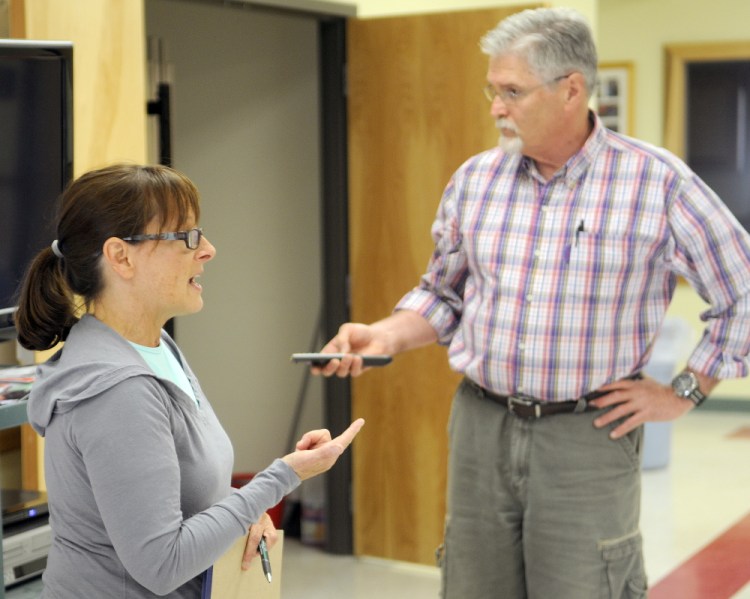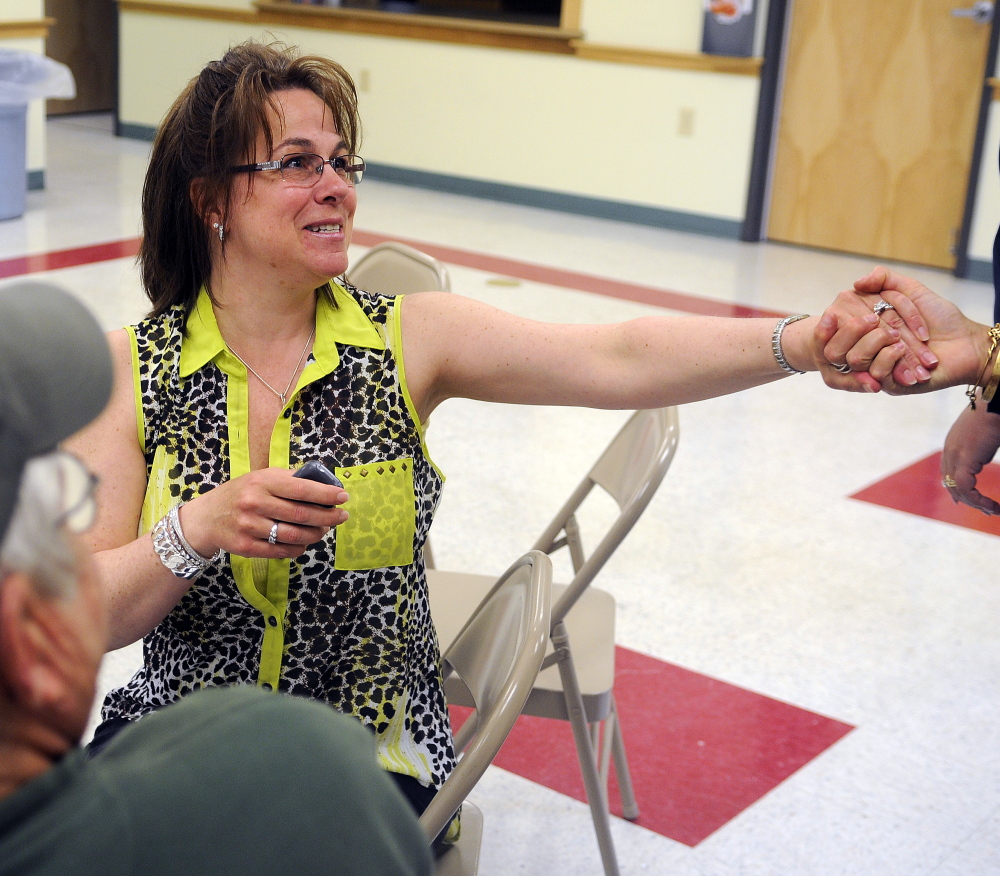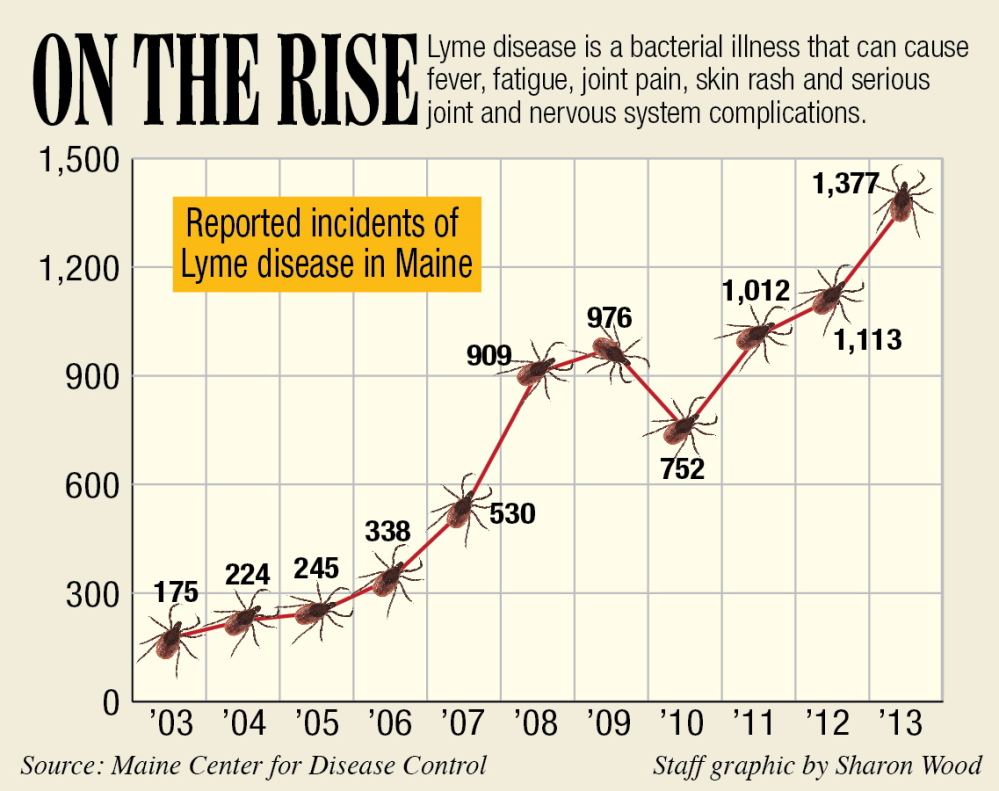MANCHESTER — Five years with Lyme disease has driven Rhonda Smith, of Wayne, to seek treatment at a specialty clinic in Reno, Nevada.
“I have tickets. I’m leaving on the 30th,” she said.
Smith didn’t take the decision lightly.
“I’ve seen 10 different practitioners. I spend $10,000 a year out of pocket for Lyme disease. I can’t work. I can’t even drive because of the seizures,” Smith said on Thursday prior to a meeting of the Capital Area Lyme Support Group which gathers at the Manchester Fire Department the second Thursday of every month.
The tipping point for Smith was 71 seizures since June 8, 2014, three of them on May 9. She carries a small emergency kit of medication everywhere she goes in case of a seizure.
Lyme disease is an infection caused by the bacterium Borrelia burgdorferi transmitted by deer ticks.
Seizures are one of the symptoms Smith says she has experienced since the tick bite five years ago that left her with the trademark bull’s-eye rash. She said she received the wrong medication initially, and that left her system vulnerable to Lyme.
Smith and a number of others at the support meeting detailed symptoms they and sometimes their medical providers attribute to Lyme: aches and pains in joints, brain fog, blurred vision, swollen lower limbs, tics, spastic movements, endless fatigue and suicidal thoughts.
The group meetings that provide some catharsis are conducted by Cheryl Farley, of Manchester, a nutritionist and survivor of a particularly nasty bout with chronic Lyme disease, and Farley’s husband, Dennis.
The couple has founded a group in Lewiston as well that meets Mondays at the Arc Cafe on Lisbon Street. MaineLyme, a nonprofit organization aiming “to decrease the prevalence of Lyme Disease and other tick-borne illnesses in the State of Maine through awareness, prevention, education and advocacy,” offers a list of all the support groups in the state as does Midcoast Lyme Disease Support and Education.
Thursday’s meeting was the second anniversary of the Manchester group.
“I’m a Lyme survivor,” Farley told the 15 attendees. “By the grace of God, I’m Lyme free.”
She said the doctor at the Nevada clinic saved her life, and she in turn hopes to help others dealing with Lyme in terms of education and resources.
A chart offered by the Centers for Disease Control and Prevention shows that from 2004 to 2013, the incidence of Lyme disease in Maine grew by 84.8 percent and indicates 27,000 confirmed cases reported nationally in 2013 with another 10,000 or so probable.
“Most Lyme disease cases reported to CDC through national surveillance are concentrated heavily in the Northeast and upper Midwest with 96 percent of reported cases occurring in 13 states,” according to the CDC’s website. The same site says that three studies using different methods of calculation indicate that 300,000 people are diagnosed with it each year, which means many instances go unreported.
Farley recommends that people view a 2008 documentary on Lyme disease found at topdocumentaryfilms.com/under-our-skin, directed by Andy Abraham Wilson. It details the struggles of people seeking and getting help from a handful of physicians who treat symptoms of chronic Lyme disease with antibiotics long term. It also shows how several of those physicians had their medical licenses suspended for doing so.
In Maine, the Legislature is considering L.D. 422, “An Act to Improve Access to Treatments for Lyme Disease,” which would prevent the Board of Licensure in Maine from imposing discipline or suspending a license of a physician for prescribing long-term antibiotic therapy for a patient with chronic or acute Lyme disease. That bill, sponsored by state Rep. Deborah Sanderson, R-Chelsea, got a divided report from the Committee on Labor, Commerce, Research and Economic Development in late April and will move on to the House for consideration.
Farley and the other attendees at Thursday’s meeting said many health-care providers don’t know how to properly diagnose or treat Lyme.
The Lyme and Tick-borne Diseases Research Center at Columbia University in New York recognizes the difficulties in treating Lyme.
“Until medical doctors have a test that definitively identifies the presence or absence of infection (and such a test does not yet exist), the controversy about the diagnosis and treatment of chronic Lyme Disease will continue,” its website says.
Farley said the disease is very hard on people.
“It completely incapacitated me. Suddenly I couldn’t do anything for myself,” she said.
It also made her more empathetic to people who are shut-ins.
May is Lyme Disease Awareness Month, marked by green ribbons and green porch lights, but Smith said she came attired in a lime green blouse on Thursday by accident.
She spoke during the meeting directly to the other attendees.
“You can look at all of us, and we don’t look sick,” she said.
Then she talked of sleeping 16-18 hours a day, being unable to recognize a movie her family assured her she had seen before and being unable to retain what she learned in four months on a job despite having two college degrees.
“Enough is enough,” she said.
As she and others described their symptoms, the other people nodded up and down in recognition and offered sympathy and suggestions. Then they settled into watch the documentary.
Other resources are available at Lymedisease.org, a nonprofit corporation acting as the clearinghouse for Lyme disease and all tick-borne disease issues.
Betty Adams — 621-5631
Twitter: @betadams
Send questions/comments to the editors.






Success. Please wait for the page to reload. If the page does not reload within 5 seconds, please refresh the page.
Enter your email and password to access comments.
Hi, to comment on stories you must . This profile is in addition to your subscription and website login.
Already have a commenting profile? .
Invalid username/password.
Please check your email to confirm and complete your registration.
Only subscribers are eligible to post comments. Please subscribe or login first for digital access. Here’s why.
Use the form below to reset your password. When you've submitted your account email, we will send an email with a reset code.